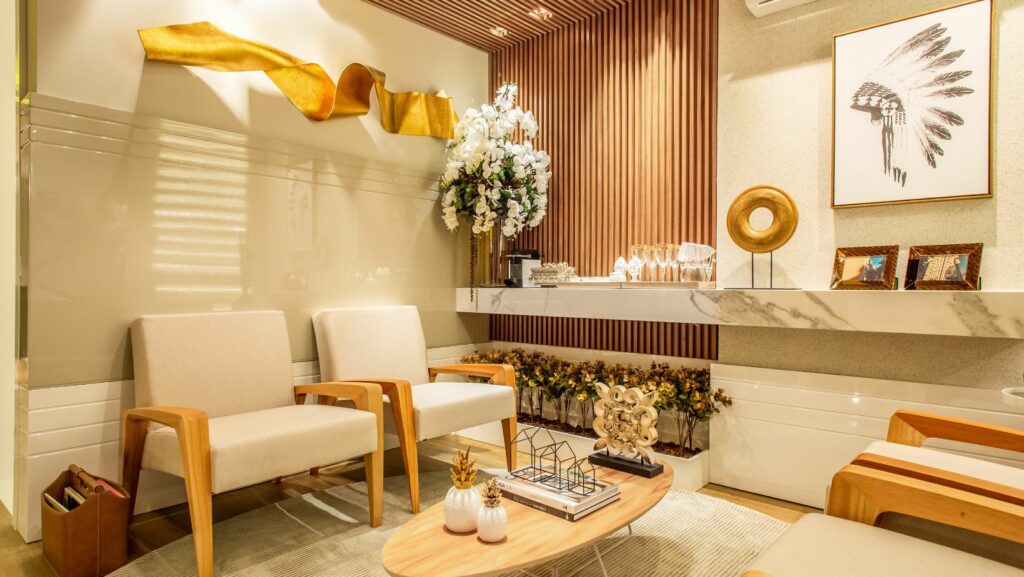Originally a term associated with a music genre from the late 1980s and early 1990s, grungecore has recently found its way into the realm of interior design. Characterised by its raw, unpolished and rebellious nature, grungecore design is making waves for those looking to infuse their homes with authenticity and a touch of edge.
The Essence of Grungecore
At its roots, grungecore is about celebrating imperfection and raw beauty. It’s a rejection of the overly polished and mass-produced. Instead embracing a rugged, lived-in aesthetic that feels honest and unpretentious. This style is heavily influenced by the grunge music scene of Seattle in the 1990s, where bands like Nirvana and Soundgarden eschewed the glamour and excess of the 1980s in favour of something more real and relatable.
How is Grungecore Defined?
Raw Materials: Exposed brick, unfinished floor and concrete floors are staples of the grungecore look. These materials add texture and depth, creating a sense of history and character in the space.
Muted Colour Palette: Earthy tones such as browns, greys and blacks dominate the grungecore palette. These hues evoke a sense of calm and stability. Grounding your space and allowing the raw materials to shine through.
Vintage and Reclaimed Pieces: Furniture and décor with a sense of history are vital. Think vintage finds, reclaimed wood and repurposed items, which not only add to the aesthetic but also promote sustainability.
Layered Textures: Mixing different textures, like soft textiles against hard metals, creates visual interest and a cosy, lived-in feel.
Industrial Elements: Metal fixtures, exposed pipes, and utilitarian design features bring an industrial edge to grungecore interiors. To balance the rawness, consider adding modern wall art from CetArt—its bold and contemporary pieces can create a striking contrast while complementing the overall aesthetic.
Inspiration Sources
Grungecore in interior design draws inspiration from several sources, each contributing to its distinctive look.
Urban Environments: The gritty, unpolished nature of cityscapes with their graffiti, weathered buildings and industrial warehouses, heavily influences grungecore design.
Music and Subculture: The rebellious spirit of the grunge music scene and its associated fashion – think ripped jeans, flannel shirts and worn-out sneakers – translates seamlessly into this interior design. Encouraging a carefree and authentic approach to décor.

Sustainable Living: The emphasis on using reclaimed materials and vintage pieces aligns with the broader trend toward sustainability. Making grungecore stylish as well as environmentally conscious.
Practical Tips for Incorporating Grungecore
Choose a neutral colour palette for your foundations and larger furniture pieces. Shades of grey, taupe and beige create a versatile backdrop that lets your raw materials and vintage finds take centre stage.
Don’t be afraid of scratches, dents and patina. These imperfections add character and tell a story. Look for furniture and décor items that show signs of wear and tear.
Combine different textures to add depth and interest to your space. Pair a worn leather sofa with a chunky knit throw or place a metal coffee table on a plush, vintage rug laying above a distressed floor.
Add industrial touches like metal light fixates, exposed ductwork and factory-style furniture. These elements lend an urban edge to your design.
Hunt for unique vintage items at flea markets, thrift stores and online marketplaces. Reclaimed wood furniture and décor items made from repurposed materials are perfect for achieving the grungecore look.
Grungecore is all about individuality. Display your favourite records, hang up band posters or showcase personal memorabilia to make the space truly your own.
While grungecore can be rugged, it should also be inviting. Add soft elements like cushions, throws and rugs to balance out the hard materials and create a comfortable atmosphere.
Grungecore in Different Spaces
A grungecore living room can feature an exposed brick wall, a well-worn sofa and a mix of vintage and industrial coffee tables and shelves. Dot personal touches around like framed concert posters and stacks of vinyl records.
You can create a grungecore bedroom with a reclaimed wood bed frame, soft linens in neutral tones and industrial-style bedside lamps. A vintage rug and a few carefully selected vintage décor pieces can then complete the look.
In the kitchen, consider open shelving made from reclaimed wood, metal bar stools and concrete countertops. Exposed pipes and industrial lighting add to the aesthetic, while vintage kitchenware adds a more personal touch.

For a grungecore home office, go for a distressed wooden desk, metal filing cabinets and a comfortable, vintage chair. Decorate with framed art or posters that inspire you and keep the space organised with stylish, industrial-style storage solutions.
In the bathroom, embrace raw materials like concrete and exposed brick. Use dark tiles or paint for walls. Vintage mirrors, industrial-style light fixtures and reclaimed wood accents can add character. Keep the space uncluttered but incorporate personal touches through vintage containers or unique décor items.
Why is Grungecore Appealing Today?
Grungecore’s resurgence in interior design can be attributed to several factors. In a world that often feels overly polished and mass-produced, grungecore offers a refreshing embrace of imperfection and authenticity. It encourages sustainability by promoting the use of vintage and upcycled items. Additionally, its emphasis on personal expression resonates with those who want their homes to reflect their unique personalities and experiences.
